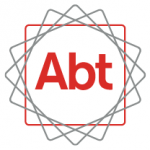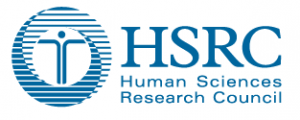About the HealthRise U.S. Program
THE NCD CHALLENGE IN U.S.
NCDs account for an estimated 88% of total deaths in the United States according to the World Health Organization (WHO). According to the Centers for Disease Control and Prevention, approximately 29% of the U.S. adult population has raised blood pressure1 and approximately 9.3% of the U.S. population has diabetes2. Chronic health conditions represent a persistent challenge to individuals living with these conditions as well as providers. As evidenced by the CDC’s fiscal year 2014 funding awards for Chronic Disease Prevention and Health Promotion in all 50 states along with other national initiatives3
While Minnesota is one of the “heart healthiest” states in the U.S. with biomarker indicators of cardiovascular disease and diabetes risk factors that are among the best in the country, great health disparities persist among key populations for control of chronic diseases like CVD and diabetes. There has been increasing focus on disparities among high-risk adult populations within Minnesota, in particular gaps in health literacy, healthy lifestyle, and access to health care.
The Medtronic Foundation commissioned IHME to conduct a needs assessment in the three Minnesota counties to identify the barriers across the Continuum of Care and more precisely identify those communities in greatest need. Using existing datasets at these county and sub-county levels, the needs assessment identified specific geographic “hotspots” in which disease prevalence is higher (including high prevalence of co-morbidities) and the proportion of the population meeting clinical targets is lower: North Minneapolis (Near North and Camden), Downtown St. Paul, South east and South West Downtown St. Paul, and nearly all of Rice County (southern Rice in particular). In addition to these geographic disparities, qualitative data highlighted several subpopulations facing unique challenges in improving CVD and diabetes outcomes including: low-income communities, undocumented immigrants, homeless, recent immigrant communities and populations with mental health comorbidities. Recurring themes regarding unique barriers faced among these populations included language and cultural barriers, lack of insurance or underinsured, and difficulty navigating health systems and maintaining regular schedule of care.
HEALTHRISE U.S. PROGRAM OVERVIEW
The HealthRise U.S. program is implementing community-based interventions in Minnesota with an explicit focus in Ramsey, Hennepin and Rice counties. HealthRise Partner IHME conducted a needs assessment in the three Minnesota counties to identify the high-risk populations and the unique challenges they face in improving CVD and diabetes outcomes. The assessment found large disparities in health outcomes by neighborhood within the counties. Identified barriers included language and cultural barriers, lack of insurance or underinsured, and difficulty navigating health systems and maintaining regular schedule of care.
Map highlighting target districts in U.S.A.
HEALTHRISE U.S. DEMONSTRATION PROJECTS
Demonstration Project Grants
HealthRise U.S. released a request for applications (RFA) in April 2015 inviting community-based organizations to submit applications for creative demonstration programs aimed at improving detection, management and control of cardiovascular disease and diabetes among underserved populations in Rice, Hennepin and Ramsey counties, Minnesota. The awards cover a three-year implementation period from October 2015 through July 2018.
Current Demonstration Projects
In September 2015, three organizations were awarded as HealthRise U.S. grantees: Pillsbury United Communities in Hennepin County; Regions Hospital Foundation in Ramsey County; and HealthFinders Collaborative in Rice County. As part of their HealthRise grants, these organizations are strengthening health care delivery in the community and extending care into home-based settings. The three organizations are building and strengthening coordinated care teams, integrating both community paramedics and community health workers as part of service provision, to holistically address patient needs and barriers. These interventions aim to increase diagnosis and improve disease management among underserved populations. Each grantee’s project is predicated on partnerships between a healthcare entity (e.g., community-based health center, or free clinic) and a community-based organization that has strong ties to the targeted population. Each grantee will also convene a steering committee of various stakeholders to provide direction and advice throughout the duration of the project. These partnerships are intended to ensure that both frontline health workers/providers and the voice of the people affected are part of the planning, implementation and continuous improvement of the project to better address the individual needs of the selected communities.
ALIGNMENT WITH LOCAL PRIORITIES AND GOVERNMENT
Through HealthRise, Medtronic Philanthropy has aligned with the Minnesota Department of Health (MDH) to coordinate work around the common goal of addressing health disparities by investing in public health interventions to improve prevention and control of cardiovascular disease and diabetes related outcomes for underserved populations in Minnesota. To date, HealthRise has engaged the city, county and state health departments to help design a request for applications based on their expertise and experience with the community. In particular, the Heart Disease/Stroke Prevention and Diabetes Units within MDH have for many years provided creative statewide initiatives under the auspices of national efforts driven by the Centers for Disease Control and Prevention (CDC). MDH provides the extensive epidemiological analysis that identifies the burden of CVD and diabetes. Overall, the work they do focuses on the full continuum of care including prevention, acute treatment, and disease management and are done in collaboration with a wide variety of partners across the state through grants provided at the local level. MDH engages partners through key committee structures that help to foster collaboration. The work MDH is doing is very complementary to the work of HealthRise. It is the intention to jointly work with MDH to identify best practices, and key performance measures. In addition, the goal of both MDH and HealthRise is to identify initiatives that address disparities, have great reach, obtain excellent outcomes and are sustainable.
CONTACT HEALTHRISE U.S.
Country Program Director





